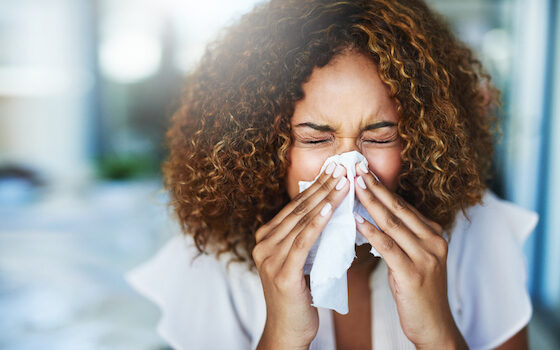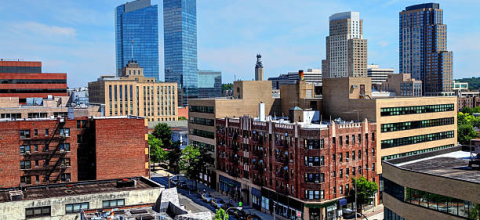Common Dust & Allergy Symptoms
There is nowhere you can hide from things that live in your house, unless you live in a Southern pole. These are microscopic creatures living all around your house, you may not see them, but they are always near. Have you experienced asthma attacks, is it difficult for you to breathe lately? Or maybe you have a runny nose, red eyes, and itchy skin? Hold on to take Tylenol, because you might have an allergy to dust, and the cause of it is dust mites, insects, pollen, mold, or even your pets. Let’s discover how dust allergy work and how you can protect yourself.
Dust: the enemy that dwells in your house
Basically, dust mites are little spiders that tend to make colonies in not-so-great cleaned places. You didn’t wipe off the dust from your shelves today? They are already there. But household dust is more complicated than you think. It is a mix of different elements which can trigger your respiratory system and cause allergies. A single particle of dust includes:
- dander (human and animal dead skin flakes);
- dust mites parts or feces;
- insect parts (saliva, feces, pieces of chitin);
- mold spores;
- pollen;
- soil particles;
- clothes, bed sheets, and carpet fibers.
You can’t really avoid the allergens unless you put yourself in a sterile box or will wear a chemical protection suit. But you’ll have to do something about it because untreated allergies can cause allergic asthma and bacterial or fungal infections.
How do you know you have an allergy?
The symptoms of an allergy may vary from person to person, so to know exactly if you have a dust allergy is your therapist’s work. Symptoms of an allergy may include:
- Frequent sneezing, itchy, runny, and stuffy nose.
- Sore throat, coughing.
- Itchy and watery eyes, eyeball and eyelid redness.
- Swollen skin, especially around the eyes.
Your symptoms may be caused by the reaction to dust and dunder or can be a part of a much bigger problem. See the therapist if you have experienced any of the symptoms above. The Internet can’t provide you with a clear answer and may contribute to panic attack development: you may simply have the flu, but the symptoms may look like you have tuberculosis. So, professional help and tests are required.
How to prepare yourself for the therapist’s appointment
- Observe your skin, and take a look at yourself more carefully. What exactly is wrong with you? Write it down, if needed, so your doctor won’t have to interrogate you.
- Remember the family’s disease history, especially their allergies, asthma, or other illnesses connected to issues with breathing.
- If you take any supplements, vitamins, or medications – write them down. The same thing goes for smoking (yes, vapes do count too) or taking any unprescribed medications, illegal substances, and so on. It’s not a good time to keep secrets. Make your doctor go through the list of taken substances and medications and decide whether they can cause these symptoms.
- Ask the therapist whether you should start taking, for example, antihistamines or any other pills after the skin test.
Dust mite allergy tests
For example, you believe that you have an allergy to dirt and dust. We highly do not recommend ignoring it, using self-prescribed medications or alternative medicine such as herbs, stones, and so on. Make an appointment with your therapist to do skin and, maybe, a blood test.
The skin test is a procedure where a doctor pricks your skin with tiny amounts of different allergens. Then, they observe the results making notes about which allergen makes your skin irritated. Based on that they make a solution whether you have an allergy or not. If you take some medications which can make the skin test irrelevant, they conduct a blood test.
Based on the test result, you will be prescribed medication. We cannot say what medication it will be, because it depends on your personal case. But we can tell how to minimize the impact of dust mites in your house.
How to get rid of dust mites
Simple answer: you can’t. But you can reduce their number and impact. Here’s how:
- get rid of dust (duh). Clean your house frequently with dry rugs, but not pipidastra (or that colorful fluffy thing on a stick for dust swipe), because it just makes the dust particles fly high to the ceiling and come back later. If you use this thing, it better be made of microfiber and wetted before use. Vacuum your carpets and wash the stuffed toys frequently, because these are the most “dust-collecting” things in your house;
- wash your clothes and bedding regularly. To kill some of the dust mites, wash all your bedding in hot water (at least 130F). If your bedding can’t be washed in hot water, just put it in the dryer for 20 minutes at 130F.
- get rid of other dust inhabitants, if possible. Bookshelves, books, magazines, tabletop ornaments, artificial flowers – anything that collects dust and lies there just because. It’s a lot of work to keep those things clean and a perfect environment for dust mites;
- low humidity will help to prevent mold growth as well as dust mites spread. An air conditioner and hygrometer might be a good idea. Try to keep relative humidity below 50%;
- purchase anti-dust allergen-proof bed sheets, mattresses, and pillows. Anything labeled as “non-allergic” is good.
There are only two solutions to your issue: see a doctor and clean your home. If everything is done right – you made your home safer for your type of allergy and took prescribed medication, you will feel better in a few days.










